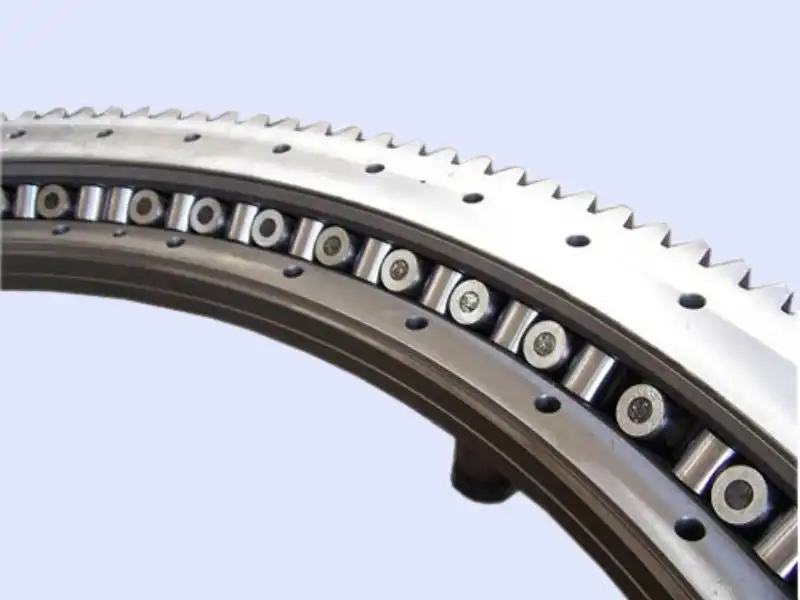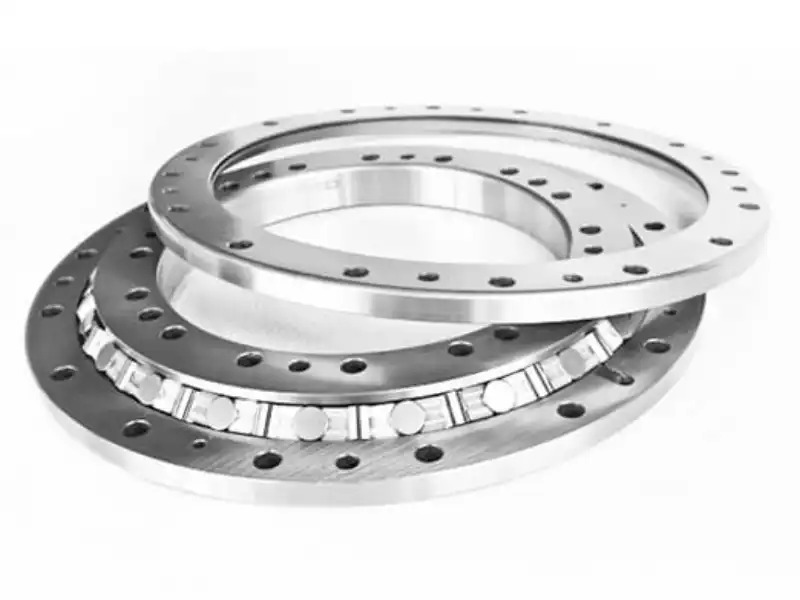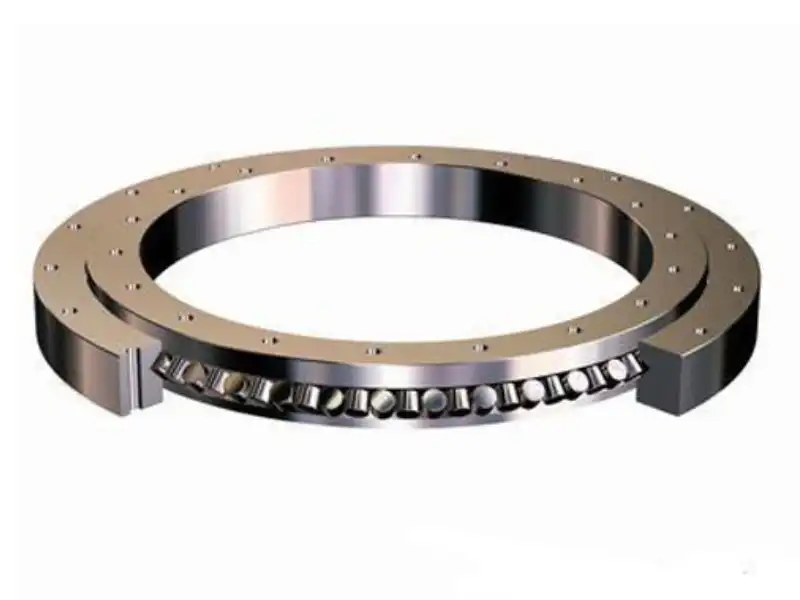How Long Does a Crossed Roller Slewing Bearing Last?
Crossed roller slewing bearings are critical components in numerous industrial and engineering applications, serving as essential mechanical interfaces that enable rotation while supporting significant loads. The longevity of these precision-engineered devices is a paramount concern for engineers, maintenance professionals, and industries relying on heavy machinery. Understanding the factors that determine their operational lifespan is crucial for optimizing performance, reducing downtime, and managing maintenance costs.

What Factors Influence the Lifespan of Crossed Roller Slewing Bearings?
Crossed roller slewing bearings represent a sophisticated mechanical solution designed to handle complex load combinations with exceptional precision and reliability. Their unique design, characterized by rollers arranged perpendicular to each other, enables superior load-bearing capabilities across multiple axes. However, the actual service life of these bearings depends on a complex interplay of multiple critical factors that extend far beyond their initial manufacturing quality.
Environmental conditions play a pivotal role in determining bearing longevity. Extreme temperatures, ranging from subzero Arctic environments to scorching desert landscapes, can significantly impact material performance and structural integrity. Thermal expansion and contraction create microscopic stresses that gradually compromise the bearing's mechanical properties. In offshore wind turbines, for instance, marine environments with high salt content and constant humidity accelerate corrosion processes, potentially reducing bearing life by up to 40% compared to inland applications.
Load characteristics represent another fundamental determinant of bearing lifespan. While crossed roller slewing bearings are engineered to handle substantial radial, axial, and moment loads simultaneously, continuous operation at or near maximum load capacity inevitably accelerates wear mechanisms. Dynamic load distribution, load frequency, and load eccentricity contribute to progressive material fatigue. Precision engineering principles suggest that maintaining loads below 70-80% of the bearing's maximum rated capacity can potentially extend operational life by several years.
Lubrication emerges as a critical factor that directly influences bearing performance and durability. High-quality lubricants formulated with advanced additives create protective molecular layers that minimize friction, dissipate heat, and prevent direct metal-to-metal contact. Synthetic lubricants with enhanced thermal stability and oxidation resistance can extend relubrication intervals and maintain consistent performance under demanding conditions. Research indicates that proper lubrication can improve bearing life by up to 300% compared to inadequately lubricated components.
Manufacturing precision represents the foundational aspect determining initial bearing quality. Sophisticated manufacturing processes involving computer numerical control (CNC) machining, advanced heat treatment techniques, and rigorous quality control protocols ensure dimensional accuracy, surface finish, and material consistency. Bearings produced using high-precision grinding and hardening techniques demonstrate superior wear resistance and more predictable performance characteristics.
Material selection further influences bearing longevity. Advanced metallurgical techniques have developed specialized alloy compositions that offer enhanced hardness, wear resistance, and fatigue strength. Chromium-based steels, nitrogen-enhanced martensitic steels, and ceramic-hybrid materials represent cutting-edge solutions that can significantly extend operational life under challenging conditions.

How Can Proper Maintenance Extend the Service Life of Slewing Bearings?
Maintenance strategies represent a proactive approach to maximizing crossed roller slewing bearing performance and longevity. Comprehensive maintenance protocols encompass a holistic methodology that integrates predictive diagnostics, periodic inspections, and strategic interventions designed to mitigate potential failure mechanisms.
Establishing a robust lubrication management program forms the cornerstone of effective bearing maintenance. This involves developing a meticulously planned lubrication schedule tailored to specific operational environments and manufacturer recommendations. Advanced lubrication techniques, such as contamination monitoring, periodic lubricant analysis, and automated lubrication systems, enable precise lubricant management.
Contamination control emerges as a critical maintenance consideration. Particulate matter, moisture, and chemical contaminants can rapidly degrade bearing performance and accelerate wear processes. Implementing comprehensive sealing solutions, utilizing advanced filtration systems, and maintaining clean operational environments are essential strategies for protecting bearing integrity.
Vibration analysis represents a sophisticated diagnostic technique that provides invaluable insights into bearing condition and potential degradation mechanisms. Modern vibration monitoring systems utilize sophisticated sensors and AI-powered algorithms to detect subtle changes in vibration signatures, enabling early identification of wear patterns, misalignments, and potential failure modes.
Thermal imaging technology offers another powerful diagnostic tool for monitoring bearing health. Infrared cameras can detect temperature variations that indicate potential friction, lubrication issues, or developing mechanical anomalies. By establishing baseline thermal profiles and monitoring temperature trends, maintenance teams can implement targeted interventions before catastrophic failures occur.
Precision alignment represents another crucial maintenance consideration. Misalignment creates uneven load distributions, accelerating wear and potentially causing premature bearing failure. Advanced laser alignment technologies enable millimeter-level precision in positioning, ensuring optimal load transfer and minimizing structural stress.
Digital condition monitoring platforms integrate multiple diagnostic techniques, providing comprehensive real-time insights into bearing performance. These sophisticated systems combine vibration analysis, temperature monitoring, lubrication tracking, and predictive algorithms to create holistic health management frameworks.
What Are the Critical Signs of Wear in Crossed Roller Slewing Bearings?

Identifying early indicators of bearing wear is crucial for implementing timely maintenance interventions and preventing potential catastrophic failures. Understanding these subtle performance degradation signals requires a nuanced approach combining visual inspection, performance monitoring, and advanced diagnostic techniques.
Unusual noise generation represents one of the most immediate indicators of potential bearing wear. Grinding, clicking, or irregular rotational sounds suggest internal mechanical disruptions. These acoustic signatures often result from roller track deformations, localized surface damage, or lubrication breakdown.
Increased rotational resistance signifies another critical wear indicator. Healthy crossed roller slewing bearings should demonstrate smooth, consistent rotation with minimal friction. Noticeable increases in torque requirements during rotation suggest potential roller track deformation, contamination accumulation, or developing structural irregularities.
Surface texture changes provide valuable diagnostic information. Microscopic examinations can reveal progressive wear patterns, including micropitting, surface scoring, or material fatigue indicators. Advanced scanning electron microscopy enables detailed analysis of surface degradation mechanisms at nanoscale resolutions.
Dimensional variations represent subtle yet significant wear indicators. Precision measurements tracking bearing diameter, roller track geometry, and component tolerances can reveal gradual dimensional changes that suggest progressive wear processes.
Lubricant condition analysis offers comprehensive insights into bearing health. Spectroscopic techniques can detect metallic particle concentrations, chemical composition changes, and contamination levels, providing early warnings of developing wear mechanisms.
Conclusion
Crossed roller slewing bearings represent sophisticated mechanical systems whose operational longevity depends on a complex interplay of design, material science, operational conditions, and maintenance strategies. By understanding and proactively managing these multifaceted factors, industries can optimize bearing performance and extend service life.
Luoyang Huigong Bearing Technology Co., Ltd. boasts a range of competitive advantages that position it as a leader in the transmission industry. Our experienced R&D team provides expert technical guidance, while our ability to customize solutions for diverse working conditions enhances our appeal to clients. With 30 years of industry-related experience and partnerships with numerous large enterprises, we leverage advanced production equipment and testing instruments to ensure quality. Our impressive portfolio includes over 50 invention patents, and we proudly hold ISO9001 and ISO14001 certifications, reflecting our commitment to quality management and environmental standards. Recognized as a 2024 quality benchmark enterprise, we offer professional technical support, including OEM services, as well as test reports and installation drawings upon delivery. Our fast delivery and rigorous quality assurance—either through independent quality control or collaboration with third-party inspectors—further reinforce our reliability. With many successful collaborations domestically and internationally, we invite you to learn more about our products by contacting CHG at sale@chg-bearing.com or calling our hotline at +86-0379-65793878.
References
1. SKF Bearing Handbook, 2020 Edition
2. ASME Journal of Tribology, "Advanced Lubrication Strategies for Precision Bearings"
3. ISO 281:2007 Standard for Rolling Bearing Life Calculation
4. NLGI Lubricant Handbook, 19th Edition
5. IEEE Transactions on Industrial Electronics, "Predictive Maintenance Techniques"
6. ASTM International Materials Standards for Bearing Steels
7. Journal of Manufacturing Processes, "Precision Manufacturing of Slewing Bearings"
8. Machinery Lubrication Magazine, "Contamination Control Strategies"
9. Bearing World Journal, "Advanced Diagnostic Techniques"
10. International Conference on Mechanical Engineering Proceedings, "Load Distribution in Complex Bearing Systems"

